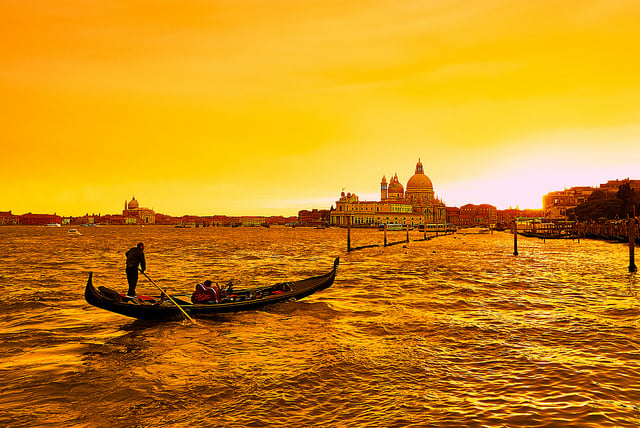Beautiful, historic, watery… Venice is many things to many people, but 'good value' is probably not the first term that would spring to mind.
An editor of rival travel publication Rough Guides, Greg Dickinson, said on Twitter that he was “bamboozled” to see the “eyeball-gougingly pricey” city included in the list.
Last month, users of online community Reddit labelled Venice “the world's biggest tourist trap” and a “rip-off” during a discussion about cities travellers most regretted visiting.
And earlier this year it was crowned the world's most expensive commuter city, following steep increases in public transport ticket prices.
So why has Lonely Planet decided it's worth the accolade?
The summary given by the travel site doesn't provide many answers, beyond recommending staying in an Airbnb in the city centre, thus saving on accommodation and transport costs.
Airbnb does offer plenty of options in and around the city; when we searched for accommodation in June next year, there were almost 300 options offering a private room (in some cases, an entire apartment) for two people at under €30 per person per night.
However, local resident Luisella Romeo, who runs tailored tours in the city, told The Local that the growing popularity of the accommodation rental site was something of a double-edged sword. She said Lonely Planet's list had caused upset in a city where relations with tourists are already strained.
READ MORE: 'Go away!', frustrated Venice locals tell tourists
“Airbnb is affecting the costs of living here,” she said. “Landlords rent their apartments to tourists rather than residents so they can make more money – so while it's cheaper for tourists to stay here, residents have to leave because the costs are too high. It's sad but true.”
Romeo points out that costs of typical tourist activities – eating out, sightseeing and so on – vary massively depending on your taste, as well as the season.
“I don't think that spending a lot necessarily means good quality. In Venice there's a lot which is overpriced,” she adds.
So if you want to see Venice on a budget, the best option may be to follow tried and tested tricks such as visiting out of season and skipping some of the luxuries – alcohol with meals or a gondola ride, for example.
Instead, you can simply wander around and enjoy the many sights the city has to offer. Some of its most famous landmarks, including St Mark's Basilica, the Bridge of Sighs and of course the city itself, are free of charge.
But Romeo points out that getting 'value' from a trip doesn't necessarily mean spending as little as possible, but getting as much as you can from the experience.
“Many tourist guidesoffer shared group tours, which is a nice way to cut down costs, and contacting a guide directly is cheaper than going through a third party.
“And when it comes to shopping, I suggest buying from local artisans who can infuse products with a human touch. It may not be the cheapest solution for travel, but at least you're supporting the city.”
Michela Scibilia, author of budget guidebook Venice Low-cost, profiles good-value local restaurants on her app Tap Venice Eating, which also allows you to search for specifics such as “scenic view” or “romantic”, so you can find what you're looking for rather than ending up in a tourist trap where the main priority is getting you to spend as much as possible.
Scibilia also recommends staying in local bed and breakfasts, such as B&B Il Giardino di Giulia in Santa Croce, and B&B Ca’ del Sole in Cannaregio, or B&B San Marco, all three of which offer affordable rooms (with doubles starting from €65 per night) in the very centre of the city.



 Please whitelist us to continue reading.
Please whitelist us to continue reading.
Member comments